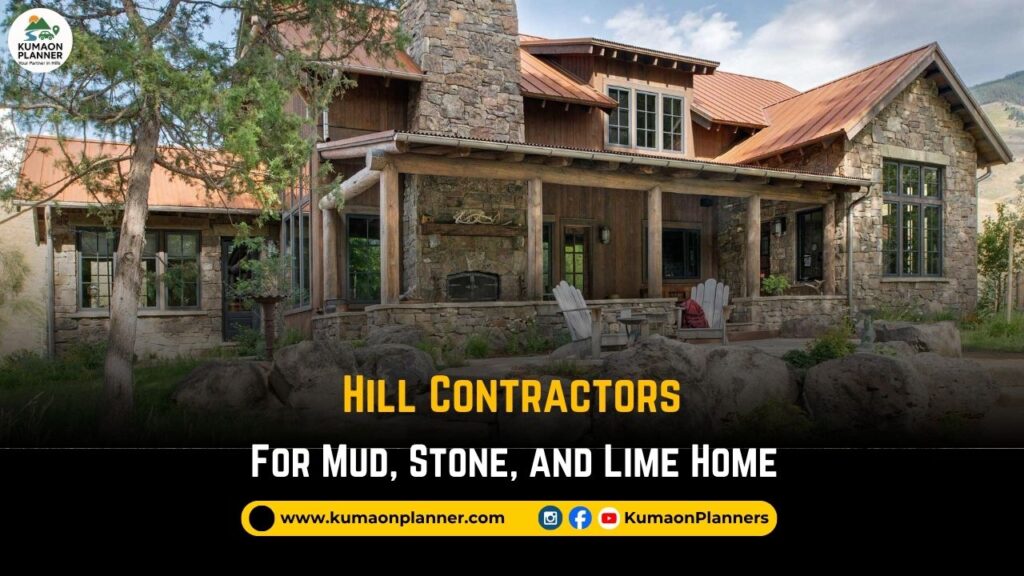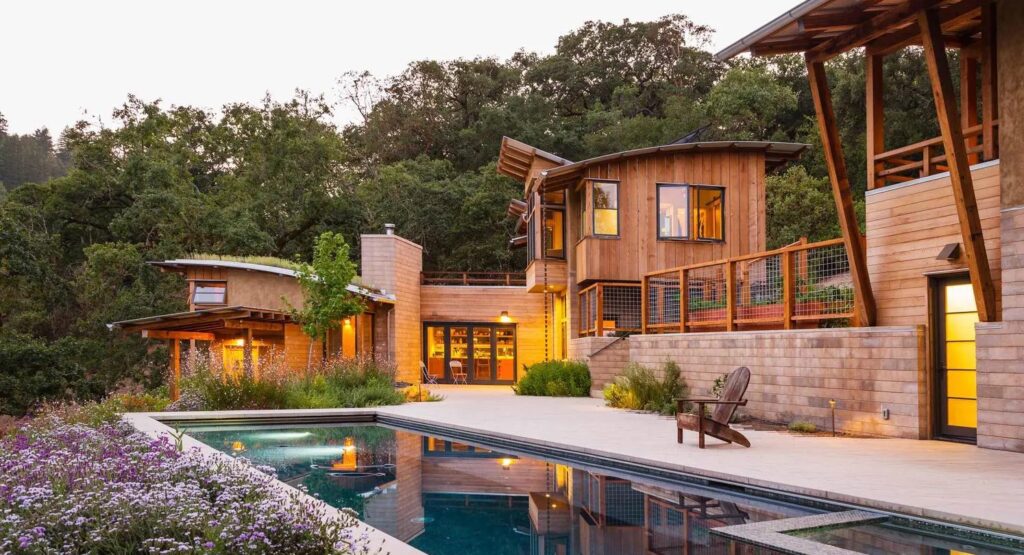In the dazzling rush of modern construction, we often forget a crucial lesson: nature has already provided us with the best building materials. In the remote mountains of Uttarakhand and Himachal, a group of contractors and artisans is still using traditional, centuries-old techniques, largely shunning cement. They use local mud, stone, and lime to create homes that are not only beautiful but are also earthquake-resistant, climate-friendly, and truly sustainable.
These houses stay cool in the summer without AC and retain warmth during the severe winter cold. Let’s explore 10 of these traditional builders and their expertise.
I. Principles of Traditional Construction
These contractors primarily work on two principles: Locality (using only locally sourced materials) and Flexibility (the ability to withstand seismic shocks).
A. Earthquake-Resistant Structures (The Anti-Cement Formula)
| Contractor Name / Group | Core Expertise | Strength of the Technique |
| 1. Patthar-Mitti Construction | Kath-Kuni Style: A unique Himachal technique where timber beams and stones are interlocked, keeping the walls flexible rather than rigid. | Ideal for harsh seismic zones because the flexibility absorbs tremors effectively. |
| 2. Dhajji Construction Foundation | Dhajji Dewari: Strong wooden frames are built, and the empty space is filled with a mixture of mud, stone, and lime. | The timber framework prevents the wall from collapsing, significantly reducing life-threatening damage. |
| 3. ‘Choona Guru’ Architects | Ancient Lime Mortar: These contractors use lime instead of cement. Lime is flexible and actually strengthens the stone over time. | Lime mortar allows the buildings to “breathe,” preventing moisture accumulation (seepage) and making them extremely durable. |
Also Read: Building Resources You Need Before Starting Construction in the Hills
B. Climate Control and Local Sourcing
| Contractor Name / Group | Key Feature | Environmental & Comfort Benefit |
| 4. Bhoo-Jeevan Builders | Adobe & Raw Plaster: They use blocks made from locally excavated earth and apply natural plaster finishes. | The walls are very thick (thermal mass), which stabilizes the internal temperature year-round. |
| 5. Deodar Woodworks | Traditional Roofing: Use strong Deodar wooden beams topped with locally sourced slate or stone tiles. | Ideal for areas with heavy snowfall. The wood acts as a natural insulator. |
| 6. Natural Stone Artisans | Hand-Cut Stone Finishing: Use hand-cut local stone for external cladding, instead of machine-cut tiles. | Not only enhances aesthetics but the stone’s texture protects the house from extreme cold or heat. |
Also Read: Brick vs Stone Construction in Hills: Which is Better for Hill Homes?
II. Integrating Tradition with Modern Needs
These contractors are successfully blending ancient art with modern design and sustainability requirements:
| Contractor Name / Group | Area of Specialization | Benefit to Modern Clients |
| 7. Pahadi Virasat Retrofitting | Heritage Conservation: They don’t demolish old, historic structures; they use traditional methods to strengthen and reinforce them. | Preserves ancestral homes while improving their seismic resilience and adding modern utilities. |
| 8. Himalayan Eco-Build | Low Carbon Footprint: They use recycled materials, such as salvaged wood, windows, and fittings, in their construction. | The most ethical and sustainable choice for eco-conscious clients. |
| 9. Mitti & Bamboo Arts | Cost-Effective Technique: Incorporate bamboo beams or laths with mud and lime, reducing the need for expensive steel. | Helps keep the construction cost manageable while remaining highly durable. |
| 10. Rural Construction Collaborative (RCC) | Community Model: They not only build but also train and involve local youth and artisans in the construction process. | Your home is built with authentic local expertise, boosting the local economy and employment. |
Also Read: Cost Estimation for Building a Home in the Kumaon Hills
III. Why Choose These Builders? (The Unbeatable Advantages)
The three biggest reasons to choose these traditional contractors are:
- Zero-AC Comfort: The thick stone and earth walls prevent heat from entering during the day and escaping at night. This keeps the internal temperature naturally balanced.
- Environmental Respect: They do not rely on large cement factories. By using material sourced from the land, they significantly reduce pollution and the carbon footprint of the construction.
- Authentic Pahadi Identity: These homes possess a soul. They reflect the culture, art, and history of the mountains, unlike generic concrete structures that look the same everywhere.
If you desire a house that is rooted in the mountains, structurally strong, and kind to the planet, embracing the craft of these traditional artisans is the way forward.
Also Read: How to Choose the Right Contractor for Hill Construction
Do you have any specific technical questions about these construction methods?
QUICK CONNECT
For Any Other Query or Service Contact us here.




